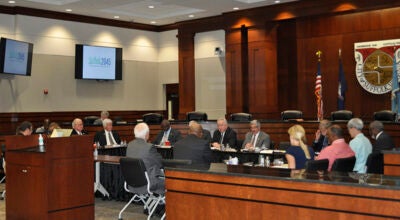Tech upgrade set for Western Freeway
Published 8:27 pm Wednesday, October 31, 2012
Motorists will be better informed of road conditions and delays after the installation of six closed-circuit cameras and five message signs along the Western Freeway, the Virginia Department of Transportation says.
The cameras and message signs are being installed between Interstate 664 and the West Norfolk Bridge, with the work scheduled for completion by the end of 2012, department spokeswoman Brooke Grow wrote in an email.
Another department spokeswoman, Jennifer Gwaltney, wrote that the infrastructure is part of a “statewide advanced communications technology network.”
“Throughout the region, this network is used to help VDOT monitor traffic conditions and to provide motorists with real-time weather and road conditions,” she wrote.
“The cameras and signs that are being installed on the Western Freeway are in addition to the existing communications network and will help VDOT to monitor traffic and provide incident/emergency management in this area.”
The new cameras and signs will be connected to the Hampton Roads Transportation Operations Center.
VDOT says cameras allow center operators to pinpoint where an accident has occurred when “vehicle detection units” show slowing traffic after a crash.
The information forms the basis of alerts that go out over www.511virginia.org, Virginia’s travel information service, which can also be accessed by dialing “511” or via free iPhone and Android mobile apps.
Alerts are also broadcast via electronic message boards, like those being installed along the Western Freeway, and via Highway Advisory Radio. Center operators are also able to dispatch VDOT safety patrols and contact emergency services based on information from the system.
Gwaltney wrote that the Western Freeway has been selected for the technology because of traffic volumes. Truck traffic on the road will increase significantly due to the future expansion of the Port of Virginia, she wrote.
It will cost about $3 million for the new technology, according to Gwaltney, including “fiber installation, power services, structures, devices and all related infrastructure.”





